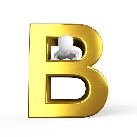As I have been writing these posts on the somewhat dry topic of bureaucracy one thing struck me as rather funny… that how despite being on the fourth post on the subject I still manage to spell it incorrectly – thank goodness for auto correct. When I was at school, good teachers used to get us to create mnemonics to remember key terms and ideas. I rather enjoyed doing those, so I thought I would end this series on bureaucracy with a more light-hearted look at this business crippler, with a mnemonic. Who knows I may finally learn how to spell the damn word! So, here goes…
 ORING…paperwork that has to be completed but does not add any value to the business. Often for the employees the value perception is so low the paperwork lies forgotten in a filing cabinet bottom drawer (archived in their inbox for later). Allocate a deadline and a specific time for its completion and clarify with staff why it has to be done, then move onto profitable company business.
ORING…paperwork that has to be completed but does not add any value to the business. Often for the employees the value perception is so low the paperwork lies forgotten in a filing cabinet bottom drawer (archived in their inbox for later). Allocate a deadline and a specific time for its completion and clarify with staff why it has to be done, then move onto profitable company business.
 NFULFILLING is what work can become if every creative idea is squashed by the need to fill in forms in triplicate to get anything done. Implement an employee suggestion box/forum and assign a senior member of the organisation to read, respond and evaluate the ideas.
NFULFILLING is what work can become if every creative idea is squashed by the need to fill in forms in triplicate to get anything done. Implement an employee suggestion box/forum and assign a senior member of the organisation to read, respond and evaluate the ideas.
 ED TAPE tying up the company time with external requirements can hamper an organisations’ reaction time to threats and result in missed opportunities. Employ the right professionals to reduce, remove and minimise the impact- sometimes external professionals are more cost effective as they have a higher level of expertise in this area.
ED TAPE tying up the company time with external requirements can hamper an organisations’ reaction time to threats and result in missed opportunities. Employ the right professionals to reduce, remove and minimise the impact- sometimes external professionals are more cost effective as they have a higher level of expertise in this area.
 NERGY DRAINING. The core mission of a company should be at the forefront of each decision. Paperwork and systems are support mechanisms not the function of a company’s activities. Regularly evaluate the contribution of company systems, change and remove those that impede progress.
NERGY DRAINING. The core mission of a company should be at the forefront of each decision. Paperwork and systems are support mechanisms not the function of a company’s activities. Regularly evaluate the contribution of company systems, change and remove those that impede progress.
 PATHY can be the result of being hampered by too much form filling. Re-energise the workforce by removing some of this “dead time” work by outsourcing it.
PATHY can be the result of being hampered by too much form filling. Re-energise the workforce by removing some of this “dead time” work by outsourcing it.
 NNECCESSARY layers, especially of the actual structure and reporting lines of a business. This can be a self-imposed bureaucracy of a growing company that uses a long chain of command as a control mechanism, instead of trusting its employees to implement ideas without three levels of approval. Ironically in tough times, removing these layers as a means of reducing costs sometimes results in a leaner more efficient business. Experiment with a flatter, less hierarchical structure, removing some layers of authority and empowering more autonomous decision making to make the company more responsive and innovative.
NNECCESSARY layers, especially of the actual structure and reporting lines of a business. This can be a self-imposed bureaucracy of a growing company that uses a long chain of command as a control mechanism, instead of trusting its employees to implement ideas without three levels of approval. Ironically in tough times, removing these layers as a means of reducing costs sometimes results in a leaner more efficient business. Experiment with a flatter, less hierarchical structure, removing some layers of authority and empowering more autonomous decision making to make the company more responsive and innovative.
 ONTROLLING rather than contributing. Be ruthless about whether a procedure adds value to the company’s bottom line, if not, remove it.
ONTROLLING rather than contributing. Be ruthless about whether a procedure adds value to the company’s bottom line, if not, remove it.
 IGID and inflexible rules may become redundant. What worked once may no longer be appropriate. Keep up with newer, faster, technological systems that reduce the burden of red tape.
IGID and inflexible rules may become redundant. What worked once may no longer be appropriate. Keep up with newer, faster, technological systems that reduce the burden of red tape.
 DAPTABILITY is choked by systems that rule rather than serve a business. Resist the urge to add more systems; instead evaluate alternative mechanisms for innovative conversation that can release fresh ideas and innovate the company approach to problem solving.
DAPTABILITY is choked by systems that rule rather than serve a business. Resist the urge to add more systems; instead evaluate alternative mechanisms for innovative conversation that can release fresh ideas and innovate the company approach to problem solving.
 HANGE is good, not to be feared. IT change is often held up as the solution to organisational progress; but not if it simply replaces one bureaucratic system with an automated version! Implement a change management process, and integrate the human factor to make it truly effective. (More on this approach, here)
HANGE is good, not to be feared. IT change is often held up as the solution to organisational progress; but not if it simply replaces one bureaucratic system with an automated version! Implement a change management process, and integrate the human factor to make it truly effective. (More on this approach, here)
 OU are at the heart of an organisation, in other words, PEOPLE, are a company’s biggest asset. The awesome power of the human mind is greater than any technology or system- they serve it to allow it to flourish, innovate and bring fresh ideas to the table.
OU are at the heart of an organisation, in other words, PEOPLE, are a company’s biggest asset. The awesome power of the human mind is greater than any technology or system- they serve it to allow it to flourish, innovate and bring fresh ideas to the table.
This brings me to the end of my series on bureaucracy, next week I am going to take a closer look at strategic thinking and how it contributes to company development and success.

